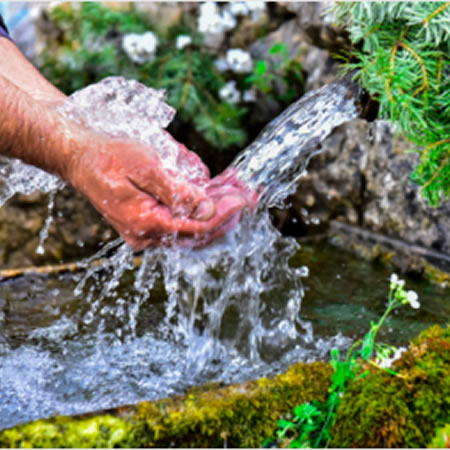Natural spring water is totally different to table water.
Table water can be network water (commonly referred to as tap water) or surface water (water in lakes or rivers) or through drilling or even a desalination product (sea water that has undergone reverse osmosis). Table water is disinfected (chlorination, ozonisation, or filtering) in order to be safe for humans. Consequently, table water does not differ from tap water, except for the fact that the former is sold packaged.
Natural spring water
Natural spring water has an underground origin and it is bottled in situ at the water abstraction source (source or drilling). It does not subject to any disinfection procedures and its physicochemical parameters are in accordance with the drinking water legislation.
Natural mineral water
Natural mineral water is like natural source water; the only difference is that the former undergoes a process of monitoring metallic elements during the four seasons of the year and is kept constant in concentration.
Natural mineral water naturally aerated
This water contains the same carbon dioxide content after bottling that it had when taken from the source.
Aerated natural mineral water
It is natural mineral water with the addition of carbon dioxide of a different origin to that of the aquifer which the water originates (it is added during bottling through technical means).
Get informed before getting thirsty
It is therefore good for the consumer to be aware of the name of the water he consumes in order to know the origin of the water he is offered and, hence, choose based on quality and value for money.


